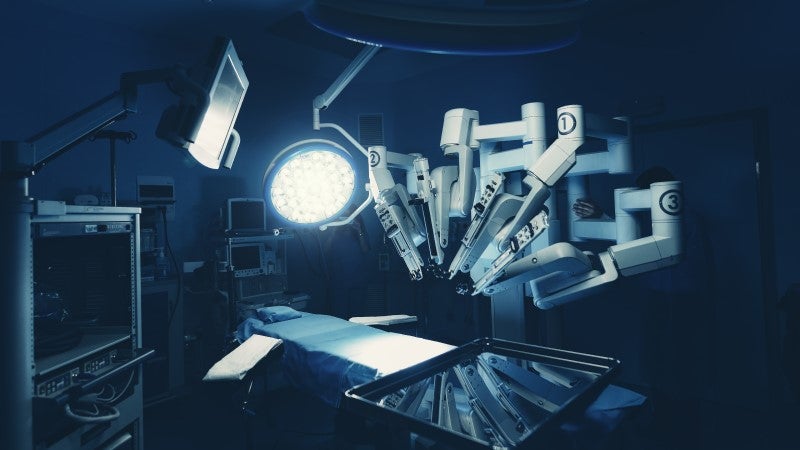Earlier this month, Intuitive Surgical, the market leader of robotic-assisted surgery systems and manufacturer of the da Vinci RAS system, reported in its Q3 earnings a 30% year-over-year (YOY) growth in revenue. Even after accounting for the decline in sales in the previous year due to Covid-19, its compound annual growth rate (CAGR) of 13% from Q3 2019 to Q3 2021 demonstrates the company’s consistency in its strong performance, as increasing numbers of hospitals purchase RAS systems to perform complex minimally invasive surgeries (MIS). Intuitive Surgical also reported a 20% YOY growth in global procedure numbers using its da Vinci RAS system, primarily for general surgery procedures that include hernia repair, hysterectomy, prostatectomy and pyeloplasty, among others. Thus, a growing trend for certain complex MIS to be performed via RAS will continue to provide Intuitive Surgical with plenty of opportunities to remain the market leader.
Other companies, however, are slowly catching up to Intuitive Surgical. Medtronic, for example, recently gained a CE mark for its Hugo RAS system for use in urological and gynaecological procedures, after having been granted an investigational device exemption (IDE) approval by the US Food and Drug Administration (FDA) in May 2021. GlobalData expects the FDA to make a decision for its final approval in H2 2022, but with the CE mark, Medtronic is set to immediately grow its European RAS systems market share by competing against Intuitive Surgical.
How well do you really know your competitors?
Access the most comprehensive Company Profiles on the market, powered by GlobalData. Save hours of research. Gain competitive edge.

Thank you!
Your download email will arrive shortly
Not ready to buy yet? Download a free sample
We are confident about the unique quality of our Company Profiles. However, we want you to make the most beneficial decision for your business, so we offer a free sample that you can download by submitting the below form
By GlobalDataAnother key player in this market is Johnson & Johnson, which in contrast to Medtronic’s recent progress in its regulatory approval, disclosed a two-year delay on its Ottava RAS system rollout, citing technical and supply chain challenges. Clinical trials for the Ottava RAS system were initially planned for 2022, but this setback will postpone its market entry for commercial use until at least 2025. This provides Medtronic invaluable time to establish itself as the main competitor against Intuitive Surgical, which remains the pioneer and leader of RAS systems.
While the supply chain challenges haven’t affected competitors of Johnson & Johnson as much thus far, GlobalData expects the growing volatility in the supply chain of critical components like semiconductors and capacitors to increase costs and uncertainty in the development and sales of all RAS systems. Stabilisation of the supply chain for such components and the regulatory approval decisions of new RAS systems are among the key indicators for the continued rapid growth of this market and its competitive dynamics.
According to GlobalData, the RAS systems market was valued at more than $1.5bn in 2020, the majority of which was concentrated in the US. By 2030, it is expected to grow at a CAGR of 7.6% to $3.2bn, driven by the ability of RAS systems to perform more complex MIS procedures, advanced integrated technologies and improved surgical outcomes.











Related Company Profiles
Medtronic Plc
RAS AG